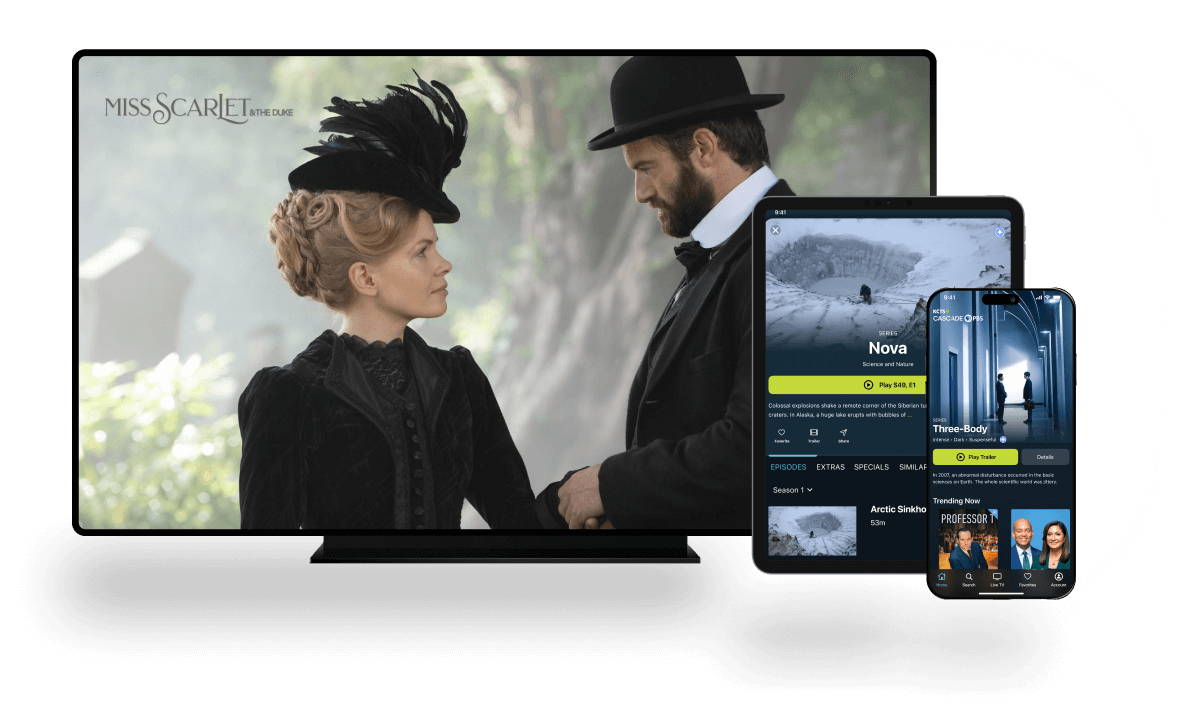
Time Team America
Meet Colin Campbell
Show title: Time Team America
Video title: Meet Colin Campbell
Video duration: 1m 14sVideo description: Colin talks about his unique role as artist on Time Team America.
Watch Clip

Large Pit House
27s
Time Team America travels to Southern Colorado in search of the Lost Pueblo Village. Get a glimpse inside what would have been the largest known pit house on the Dillard site 1400 years ago.
Watch Clip

Zooarchaeology
2m 36s
With a name like Dr. Otter, it’s no wonder that this Zooarchaeologist loves fish bones. Edward likes all animal bones really, but fish are his favorite. Archaeologists rely on scientists like him to identify the animal bones on a site. These bones can reveal important clues about the people who lived there.
Watch Clip

Ancient Technology
2m 24s
Indigenous Archaeologist Marky Weahkee is an expert at reproducing ancient technology. From flintknapping and weaving yucca cordage to knowing the benefits of native plants, Mary has a wealth of knowledge about the past people, which helps give her context on an archaeological site. She teaches this knowledge to others in order to show them how resourceful the people of the past could be.
Watch Clip
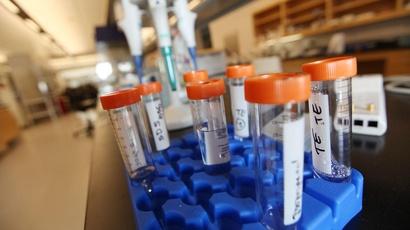
Bones to DNA
1m 16s
Archaeologist Lauren O’Shea studies ancient bison DNA. She demonstrates in the lab how a chunk of bone can be broken down into DNA for analysis. DNA tells a history. “It’s not the written record,” she says, “but it’s a biological record of the past.”
Watch Clip

Precious Plants
3m 8s
Greg McKee loves his ferns. He’s the acting curator of the fern collection at the Smithsonian Institution. Greg explains why studying plant material is relevant to archaeology, and how it helps to place a site in time and ecological space. Watch how he identifies specimens, and learn the importance of collecting data.
Watch Clip
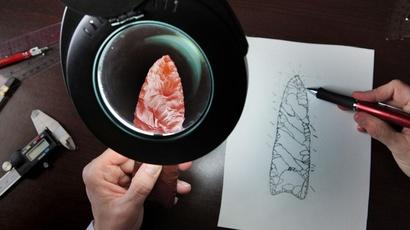
Scientific Illustration
2m 22s
Kathleen Rowland is a scientific illustrator. She draws artifacts in a way that is so precise, that the illustration itself can then be studied in place of the object. What Kathleen does may look like art, but make no mistake, there is no room for creative expression in scientific illustration. It’s meticulous, even tedious, and that's why Kathleen loves it.
Watch Clip

Archaeomagnetic Dating
2m 58s
Dr. Eric Blinman, director of the New Mexico Office of Archaeological Studies, explains how archaeomagnetic dating can help archaeologists determine the age of their site. When dirt is superheated, magnetic minerals in the soil realign to match the positions of the Earth’s poles. This technique reads that magnetic signature, and then scientists can match it to a plot of where the poles have been.
Watch Clip

Folsom Hunters & the Atlatl
2m 33s
Adrien Hannus talks about Folsom hunters and the atlatl, a device which helps propel a spear further, faster, and more fatally than a human arm can alone. This device was created and used by prehistoric people more than 10,000 years ago, and it’s an example of evolving technology from ancient times.
Watch Clip

Laser Trowels, Robots, and... Bees?
3m 31s
We asked each member of Time Team America three important questions about archaeology. Just wait until you hear what they said!
Watch Clip

Anasazi Heritage Center & The Dolores Archaeological Project
2m 53s
The Anasazi Heritage Center is a curation facility displaying ancestral puebloan culture and history in the four corners region of the Southwest. The museum also conserves artifacts, and encourages public awareness about modern archaeological methods. Many of these artifacts derived from the Dolores Archaeological Project, the largest public archaeological program in US history.
Watch Clip

Dendrochronology
2m 1s
Dr. Ron Towner from the Laboratory of Tree-Ring Research at the University of Arizona, explains the principles behind dendrochronology and why this dating method is valuable to archaeologists. Ron demonstrates how to accurately count tree-rings, and discusses the importance of patterns and master chronologies.
Watch Clip
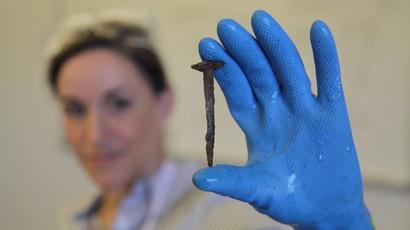
Iron Conservation
2m 23s
Students suit up in goggles and gloves when PhD candidate Heather Law Pezzarossi brings them rusty old nails to practice conserving. These artifacts are from a real archaeological site, giving the students a rare and exciting opportunity to practice iron conservation. They snip, clip, and brush away chunks of rust, and then use tannic acid to preserve the metal.
Watch Clip

Flintknapping
2m 22s
Ian Thompson, Tribal Historic Preservation Officer for the Choctaw nation of Oklahoma, is an experienced flintknapper. He describes the practice as an indigenous art form. Using a stone with high silica content, flintknappers chip away at the rock until it is transformed into a sharp edge cutting tool. Archaeologists learn a lot about past people when they uncover these bits of ancient technology.
Watch Clip
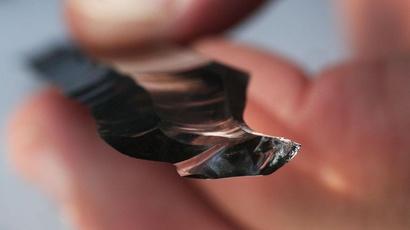
Stone Blade Surgery
2m 28s
Dr. Adrien Hannus is a professor of anthropology and the director of the Archeology Laboratory at Augustana College. Adrien is always looking for ways to show his students that the people of the past were more technologically advanced than we give them credit for. So, to demonstrate the sharpness of stone tools, he elected to have major surgery done with obsidian blades rather than steel scalpels.
Watch Clip
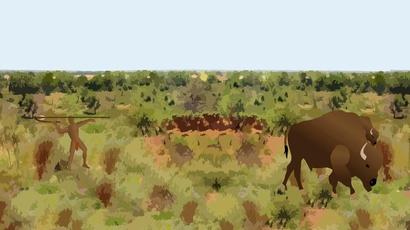
Atlatl Mechanics
1m 31s
The Atlatl is a piece of ancient hunting technology. Before there were bows and arrows, Paleoindians used this little piece of wood to launch their spears further, faster, and with more successful results. Learn how this innovative device gave humans a better shot at survival.
Watch Clip

Mystery of the Cooper Skull
4m 7s
Dr. Lee Bement recounts the mysterious story behind unearthing the Cooper Skull in 1994 - the oldest painted object in North America.
Watch Clip
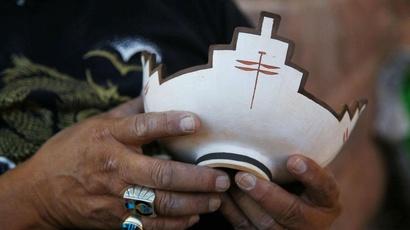
Ceramic Design
2m 41s
Milford Nahohai is a third generation potter in Zuni Pueblo, New Mexico. His mother taught him the tradition, and now his pottery is world renowned. For Milford, the stories behind his designs are a way to reconnect with his history and culture. He shares this knowledge with others by teaching them to make pottery, and to an archaeologist that means important context for understanding a site.
Watch Clip
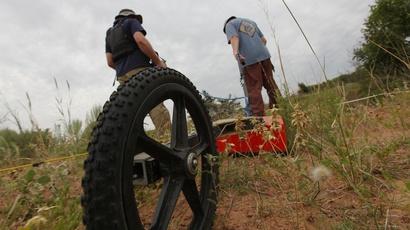
Ground-Penetrating Radar
3m 2s
Archaeological geophysist Bryan Haley uses ground penetrating radar to reveal features underground without digging. He explains why laying out a perfectly square grid is an important part of his method, and he shows off how his high tech gear can help him create a subterranean map of the site.
Watch Clip
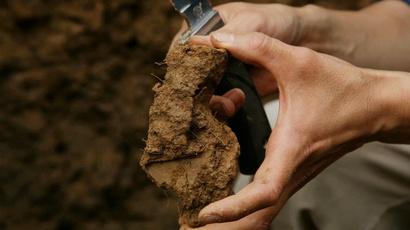
Soil Analysis
3m 41s
When it comes to soil analysis, Dr. John Wah loves getting his hands dirty. Deep in a soil pit near the University of Maryland, John shows us how the color and texture of soil can reveal the age of an archaeological site. He works quickly as the sun begins to set in Maryland, but he doesn't forget to mention how much he loves this job.
Pagination
- Page 1
- Next page Next ›
Supported by










